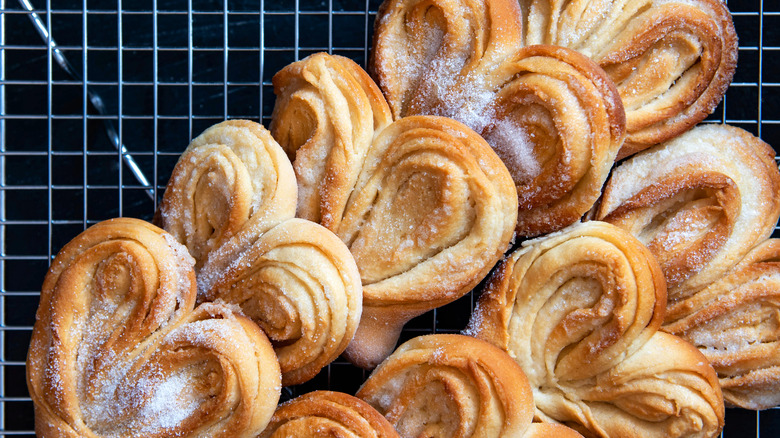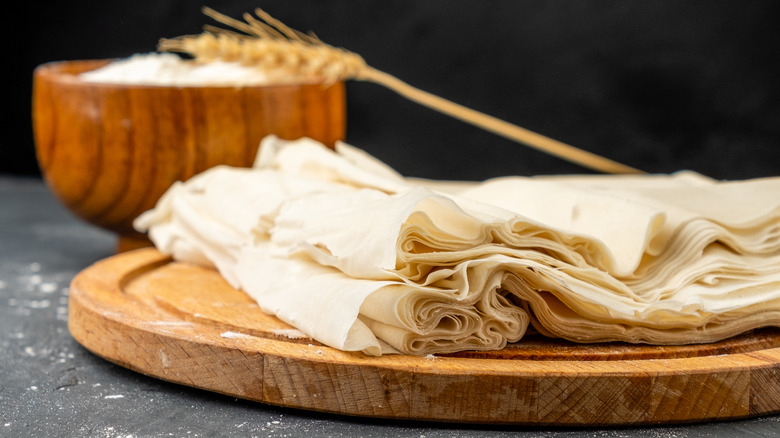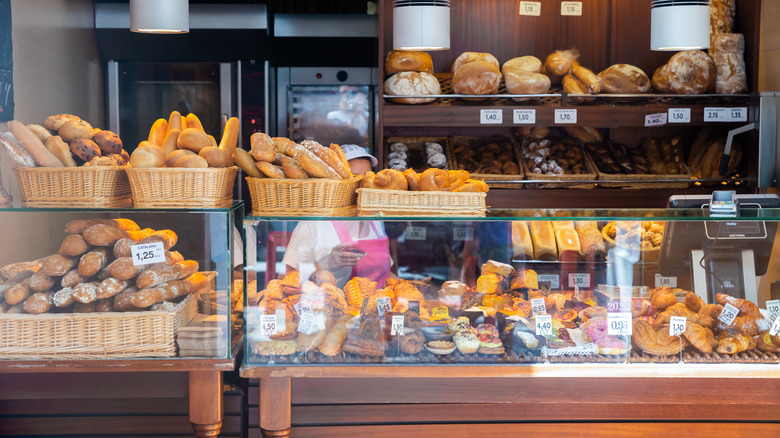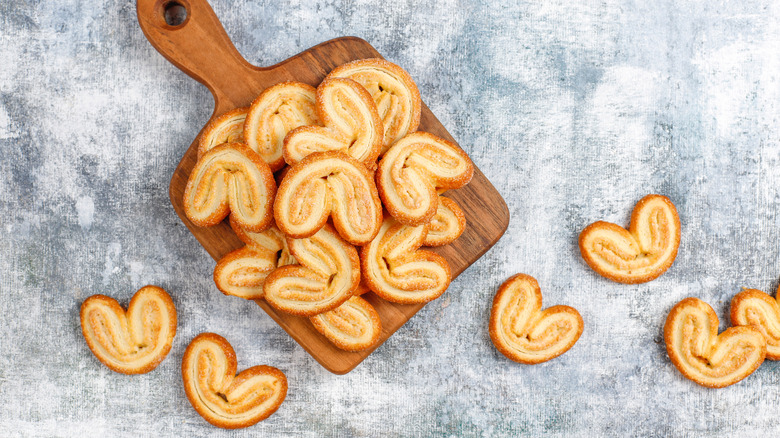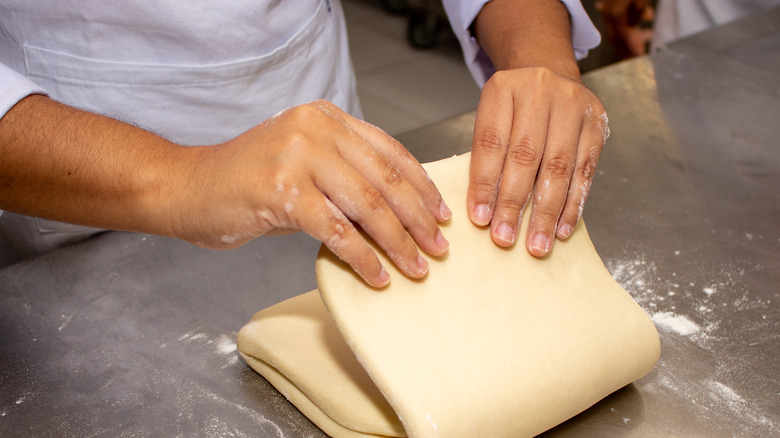What Makes French Palmier Cookies Unique?
Palmier cookies (pronounced palm-YAY) are a mainstay in French bakeries. A testament to the ingenuity of pastry chefs, the flaky pastries combine flour, water, sugar, salt, and a copious amount of butter to create an exquisitely crisp, subtly flavored sweet.
Conceptually, the cookies are simple: Palmiers are made from strips of puff pastry dusted with sugar and rolled into a coil. As The Washington Post explains, the puff pastry separates into hundreds of layers when baked, while the sugar caramelizes to give the cookies their distinctive shine. However, like any recipe requiring laminated dough, they can be tricky to master. Fortunately, as Bon Appétit notes, frozen puff pastry from the grocery store makes palmiers easy for home cooks. They're perfect for impressing guests at your next party — or keeping for yourself.
It's always worth learning more about the foods you make, though, so read up on these iconic cookies before you make your next batch.
What is the history of palmiers?
If you've ever made puff pastry from scratch, you'll know how painful it is to throw away leftover scraps of dough that you've spent hours — or days — babying. For bakers, palmiers were the perfect solution. According to The Washington Post, the cookies likely originated as a way to salvage leftover dough.
Food Timeline explains that, while the French name suggests that the pastry comes from France, the exact origin is uncertain. Palmiers were likely invented in the 19th century, likely as an adaptation of older techniques. According to Delighted Cooking, some historians argue that palmiers originated in Austria. Wherever they originated, historians agree that palmiers have their roots in ancient Middle Eastern recipes for laminated dough, like phyllo.
It seems that American pastry chefs caught on quickly. Food Timeline notes that a similar recipe can be found in Fannie Farmer's Boston Cooking School Cook Book, published in 1896. You can find the book, with its recipe for "Palm Leaves," in the Smithsonian archives.
Why are they called palmiers?
According to Food Timeline, the word 'palmier" means "palm leaves" in French, referring to the way that the way the pastry mimics the fan-shaped fronds of a palm tree.
However, the pastry is popular worldwide — and, accordingly, goes by a variety of other names. One Viennese cookbook translated the "palm leaves" name as "Palmenblatter." Others languages interpret the curly cookies as ears rather than leaves. The Washington Post notes that some Latin American markets sell palmiers simply as "orejas," or "ears" in Spanish. In Germany, they're called "pig's ears."
You'll also see them called "elephant ears," but don't get confused. According to Food Timeline, a number of other pastries go by the same name. "Elephant's ear pastry" is the literal translation of "goash-e-feel," an Afghan pastry made with ground pistachio. The name can also refer to a type of deep-fried pastry often served at American fairs.
How do you make palmiers?
According to Bon Appétit, palmiers made from frozen puff pastry are so simple you hardly need a recipe. First, roll out a sheet of defrosted puff pastry in a generous amount of sugar until it's coated on both sides. To bring out the flavor, Ina Garten recommends mixing the sugar with a pinch of salt.
Next, shape the cookies. While some recipes suggest rolling each side of the dough inward to create a two-sided scroll, Bon Appetit and Garten both recommend folding the dough instead. Once the dough is shaped into a log, slice it into ¼" to ½" pieces with a sharp knife. If the dough is soft, you may want to chill it to help it retain its shape. Bake the cookies in a hot oven — around 425º — until they're a dark golden brown.
Despite the simplicity of the recipe, The Washington Post cautions that they're not as easy as they seem. Rolling the coils too tightly or underbaking the cookies results in a soggy texture, while overbaked or loosely rolled palmiers will be too brittle.
Once you've mastered the basic recipe, try a few variations. Delighted Cooking recommends adding chocolate, cream cheese, or chopped fruits as fillings. But Palmiers don't have to be sweet. Add cheese, herbs, garlic, or pesto for a savory twist.
What dough should you use?
Since puff pastry is a notoriously difficult dough, most modern palmier recipes recommend that home bakers use the store-bought version. After all, it's understandable if you're reluctant to spend hours — or days — laboring over dough for a few dozen cookies.
Even pros like Ina Garten recommend buying puff pastry dough. As Garten told Food Network, "I always buy ready-made puff pastry... I mean, why would you make it?" She recommends Pepperidge Farm for her popular palmier recipe.
Fellow celebrity chef Alton Brown also gave frozen puff pastry his seal of approval. On his YouTube channel, Brown told his followers that he uses store-bought puff pastry for his tomato tart. Pepperidge Farm won't cut it for him, though: he stipulated that he preferred French puff pastry to the American alternative.
However, if you're already committed to the challenge of baking homemade croissants, consider making a few palmiers with your leftover dough for an authentic French bakery taste.
